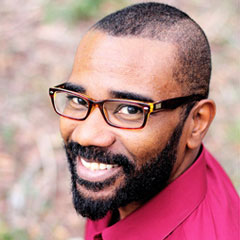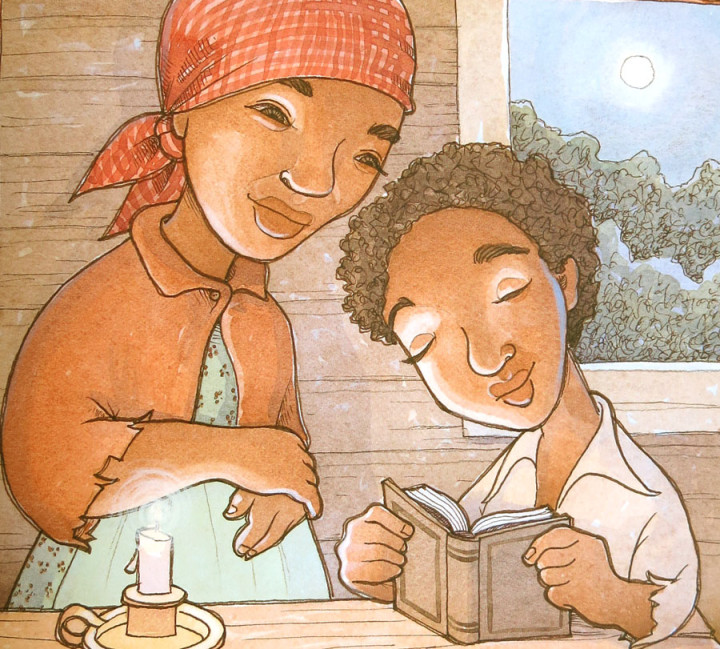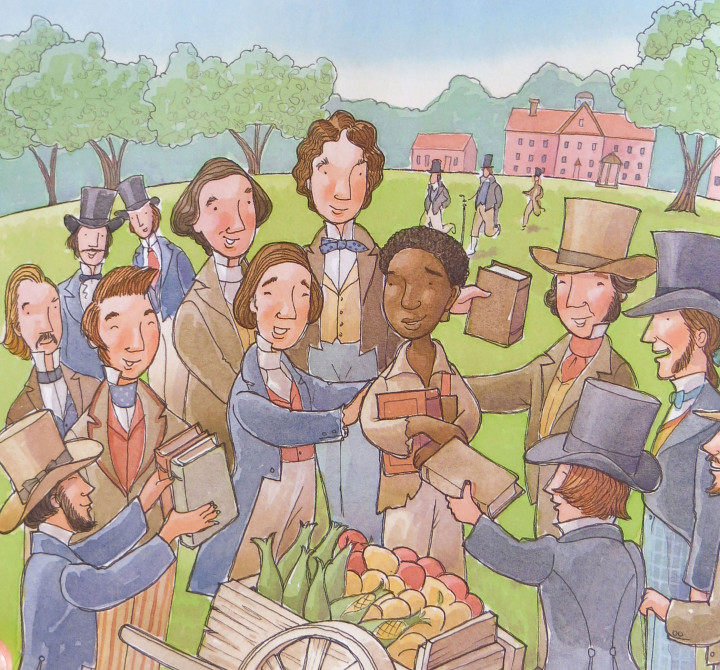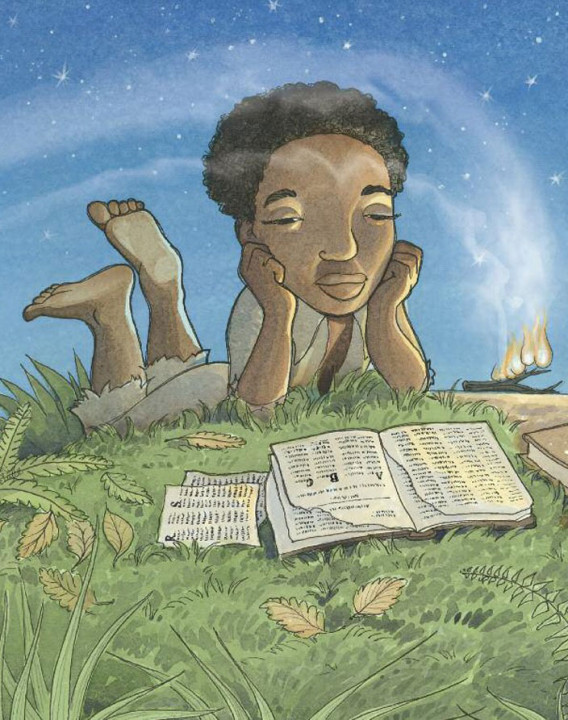New Writer Interview
Don Tate: Poet – The Remarkable Story of George Moses Horton

Underrepresented communities have been calling for more diversity in children’s publishing for years. This isn’t new….Diversity must now move beyond a buzzword.
Interviewed by Margot Abel, Associate Director, Ezra Jack Keats Foundation
You won an EJK Book Award for the second book you wrote! How did you react when you got the news?
I received the good news in an email from my publisher. I experienced a moment of elation, déjà vu, and, well, confusion. I thought, Oh my gosh, they made a mistake! In 2013, I won a New Writer Honor for my first authored book, It Jes’ Happened: When Bill Traylor Started to Draw. I had no idea that I could win again.
I sat there for a bit, worried about how I would explain to the EJK Foundation that a mistake had been made. Then I read the email again and realized that this time I’d won the the top award, the New Writer award. No mistake! Being recognized by the Ezra Jack Keats Foundation is one of the greatest accolades a new writer, like me, could imagine. I was so grateful to have won an EJK award—twice!

Did both of these acknowledgements of your writing nudge you toward being an author or will you continue to illustrate books in partnership with other writers?
I love collaborating with other writers, interpreting and expanding upon their words. I will definitely continue along that path. I’ve received some very nice accolades for my illustrations, but nothing along the lines of an Ezra Jack Keats Book Award. And that’s okay—I’m a confident illustrator. But I am a fairly new writer, and words are still new territory for me. Winning this award allows me to walk the path of a writer with much more confidence.
How is the research for writing a book different from the research for illustrating one? How is it similar?
As a writer of historical picture books, I research to learn about what happened and when. I research to learn about what motivated the people I write about. I learn about how they overcame obstacles, so that I can create a compelling story arc.
As an illustrator, it’s my job to research what things looked like. A writer sets up a scene with words, but in a picture book words are often sparse. An illustrator completes, or expands upon, the scene by filling in visual details. That can be tough sometimes, but that’s where thorough research comes in.
 You are one of the founders of The Brown Bookshelf, a well-known blog about African-American children’s literature, and an active member of We Need Diverse Books. How much progress are you seeing in increased diversity in books for children and increased exposure of children to diverse books?
You are one of the founders of The Brown Bookshelf, a well-known blog about African-American children’s literature, and an active member of We Need Diverse Books. How much progress are you seeing in increased diversity in books for children and increased exposure of children to diverse books?
Measuring recent progress is difficult. Underrepresented communities have been calling for more diversity in children’s publishing for years. This isn’t new. But recent attention to the issue from The Brown Bookshelf, We Need Diverse Books, American Indians in Children’s Literature (AICL) and other groups seem to have at least grabbed the attention of the publishing industry. The Youth Media Awards and others have been strikingly more diverse in the past couple of years, and so have the year-end Best-of lists of various journals. Diversity is a panel discussion topic at just about every book festival and reading/literacy/library conference. But walk the exhibit floor and the lack of diverse books becomes obvious—especially for someone like me who is specifically scouting out brown-skin characters. Diversity must now move beyond a buzzword.
Is Ezra Jack Keats an influence either as a writer or as an illustrator? (You can be honest!)
Ezra Jack Keats was an inspiration to me. As a kid I wasn’t the biggest reader—although I did love studying book illustration. I didn’t know much about the author or illustrator behind the books that I did read. I was in my 20s, working as a book designer at an educational publishing company, when I came across a photograph of Ezra Jack Keats. I was shocked to discover that he was a white guy!
Throughout my childhood, I just knew that Ezra Jack Keats was a black man! Had to be, the images in his books celebrated Black culture in a way that I assumed only a Black person could know—large, proud kinky afros, apple hats cocked cool to the side, dashiki-style shirts. Even the color palettes of his art took on an African feel. Obviously, he studied Black culture. He researched. He didn’t guess, which speaks to the respect he had for the people.
How do you think the EJK Book Award will affect your career as a writer?
The EJK Book Award has already affected my career. I’m no longer Don Tate. When I speak at major conferences, I’m now introduced as Ezra Jack Keats Award-Winning Author Don Tate! What a way to walk in confidence.
What advice do you have for hopeful young writers?
Persistence. I feel lucky—the first book I ever wrote and the first book I ever wrote and illustrated went on to get published (and both books won an Ezra Jack Keats Award!). But that’s not how it usually happens. With most writers, it takes years to get published and much longer to receive acknowledgement in the form of awards. So, just know that going in and don’t give up. Accept rejection as as a milestone to getting published. And celebrate each one of those milestones along the way.
